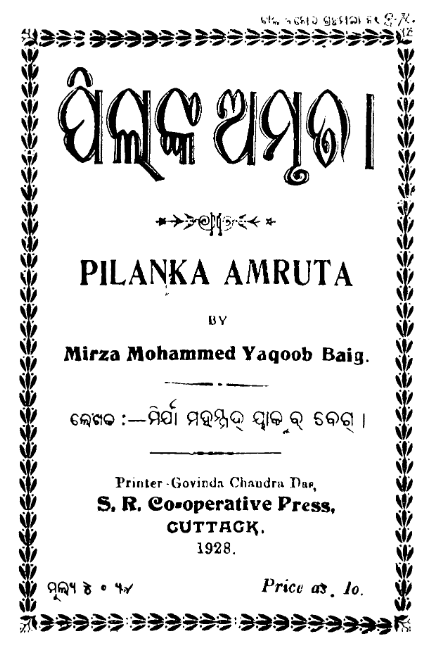Pilanka Amruta, a poignant tale penned by Mirja Md. Yakub Beg and first published in 1928, stands as a significant contribution to Odia literature. This enchanting narrative, filled with rich cultural nuances and emotional depth, offers readers a compelling glimpse into the socio-cultural landscape of Odisha during the early 20th century. The title, translating to The Nectar of Childhood, evokes a sense of nostalgia, celebrating the innocence, dreams, and tribulations of youth.
At its heart, Pilanka Amruta revolves around the life of a young boy, showcasing his journey through the challenges and joys of childhood. Set against the backdrop of a picturesque village, the story beautifully weaves together themes of friendship, family, and the bittersweet nature of growing up. Mirja Md. Yakub Beg presents the protagonist’s experiences in a manner that resonates with readers of all ages, making it a timeless piece.
The story begins with the protagonist, a curious and imaginative boy, who explores the vibrant world around him. His innocent forays lead him to a series of adventures that reveal the complexities of life, marked by moments of joy, sorrow, and profound realization. Through his eyes, readers witness the interplay of dreams and reality, as well as the harsh lessons that come with maturity.
Mirja Md. Yakub Beg’s characters are crafted with rich emotional depth; they come alive through their interactions and experiences. The protagonist’s relationships with family and friends form the emotional core of the narrative. His bond with his parents, particularly his mother, is depicted with tenderness, showcasing the nurturing aspect of familial love. At the same time, the friendships he cultivates with peers highlight the importance of camaraderie and shared experiences in shaping one’s identity.
A significant character in the story is the boy’s mentor-figure, who imparts life lessons that profoundly affect the protagonist’s outlook. This mentor represents the wisdom of experience and serves as a guiding light, helping the boy navigate the complexities of life. Through these relationships, Beg effectively communicates important values such as compassion, perseverance, and the importance of dreams.
Pilanka Amruta is rich with themes that delve into the essence of childhood and the inevitable transition into adulthood. One of the most prominent themes is the contrast between innocence and experience, which is depicted with tenderness and clarity. The story also addresses societal expectations and the loss of innocence, as the protagonist grapples with the harsh realities of life, often at odds with the idyllic visions of childhood.
The symbolism of nectar runs throughout the narrative, representing the sweetness of childhood moments and the rich experiences that shape a person. Each chapter is imbued with the idea that while youth is fleeting, its essence remains etched in one’s memory, nourishing the soul throughout life.
Books Info
| Books name | Pilanka Amruta / ପିଲାଙ୍କ ଅମୃତ |
| Author | Mirja Md Yakub Beg |
| No Of pages | 137 |
| Publisher | NA |
| Publication | 1928 |
| Printed At | Govinda Chandra Das |
| Distributor | NA |

